Life Imitates (Wall) Art: Who’s That Random Dude on Your Wall?
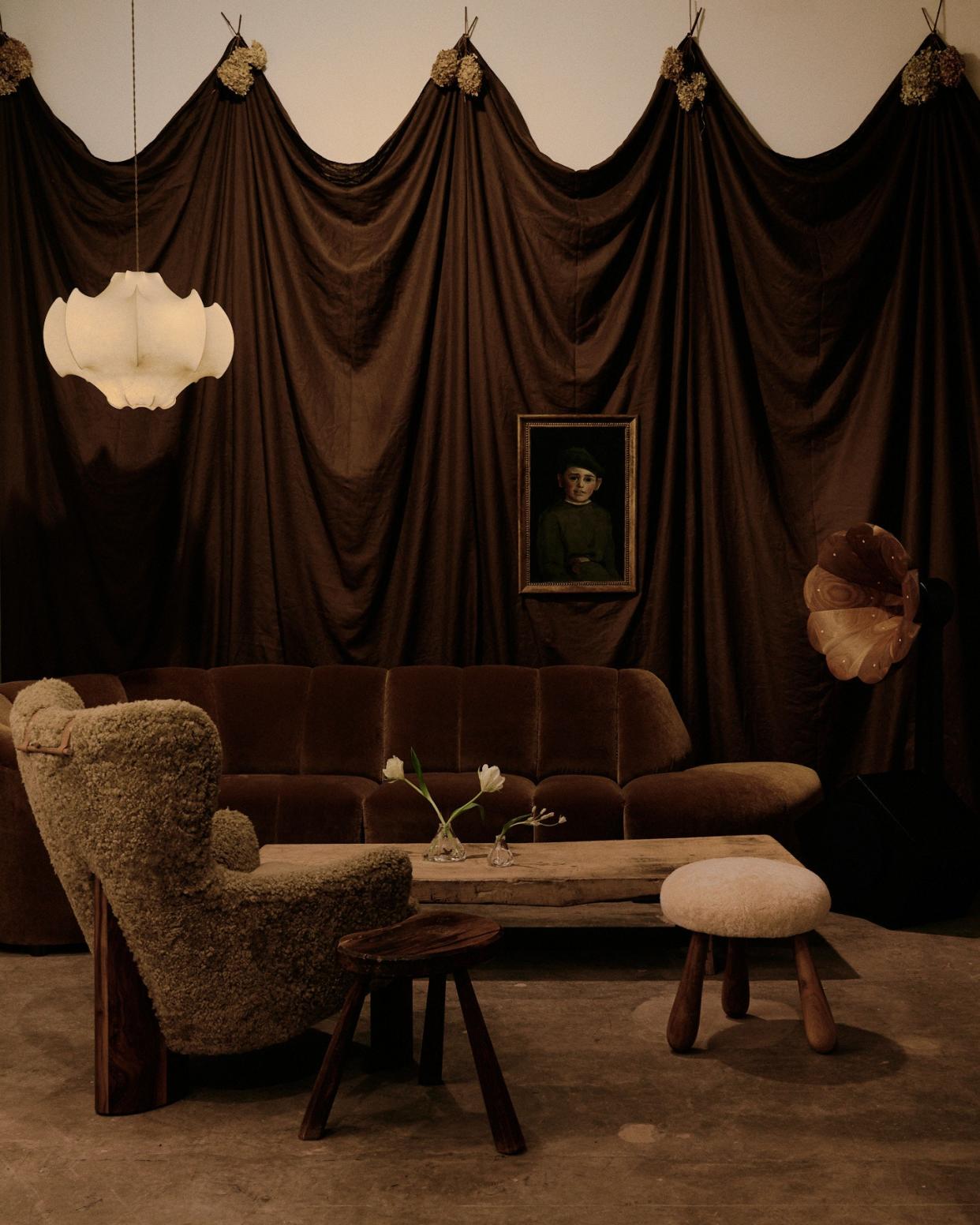
Photo courtesy of Galerie Was
In the final scene of Saltburn—director Emerald Fennell’s 2023 film about a murderous interloper who weasels his way into an aristocratic family—our protagonist, played by Barry Keoghan, gleefully dances through the English country estate he’s just inherited, wearing nothing but his birthday suit. It’s part victory lap, part taunt, made all the more satisfying to watch thanks to the dozens of stately portraits featuring multiple generations of the family looming over him. This isn’t their place anymore; it’s his. He stops, blows one of them a kiss, snorts a line of coke, then continues to audaciously prance around.
For high society (and wannabe WASPs), commissioning and displaying portraits is a centuries-old tradition. These paintings immortalize accomplishments, status, and relationships, and they’ve been proudly showcased as wall art within homes just like that of the fictional family in Saltburn. Meanwhile, portraits also served as an early form of social media; they were gifted to friends to signal allegiance and to love interests during courtship. Instead of sliding into someone’s DMs, you slid onto someone’s wall.
But a curious thing is happening now: This kind of artwork—the old oil painting in an antique gold frame—is suddenly inescapable, showing up everywhere in places that don’t have a connection to the person depicted in them. The recently opened Fifth Avenue Hotel’s bar is dedicated to portraits. There’s a man with beady eyes lurking in the corner of this bedroom in an LA bungalow and a stoic fellow in this minimalist cafe in Brooklyn, among other sightings. None of these places is a grand estate, but they all have the artwork that seems to belong in one. This makes me wonder many times over, Who, exactly, is that dead guy hanging on your wall?
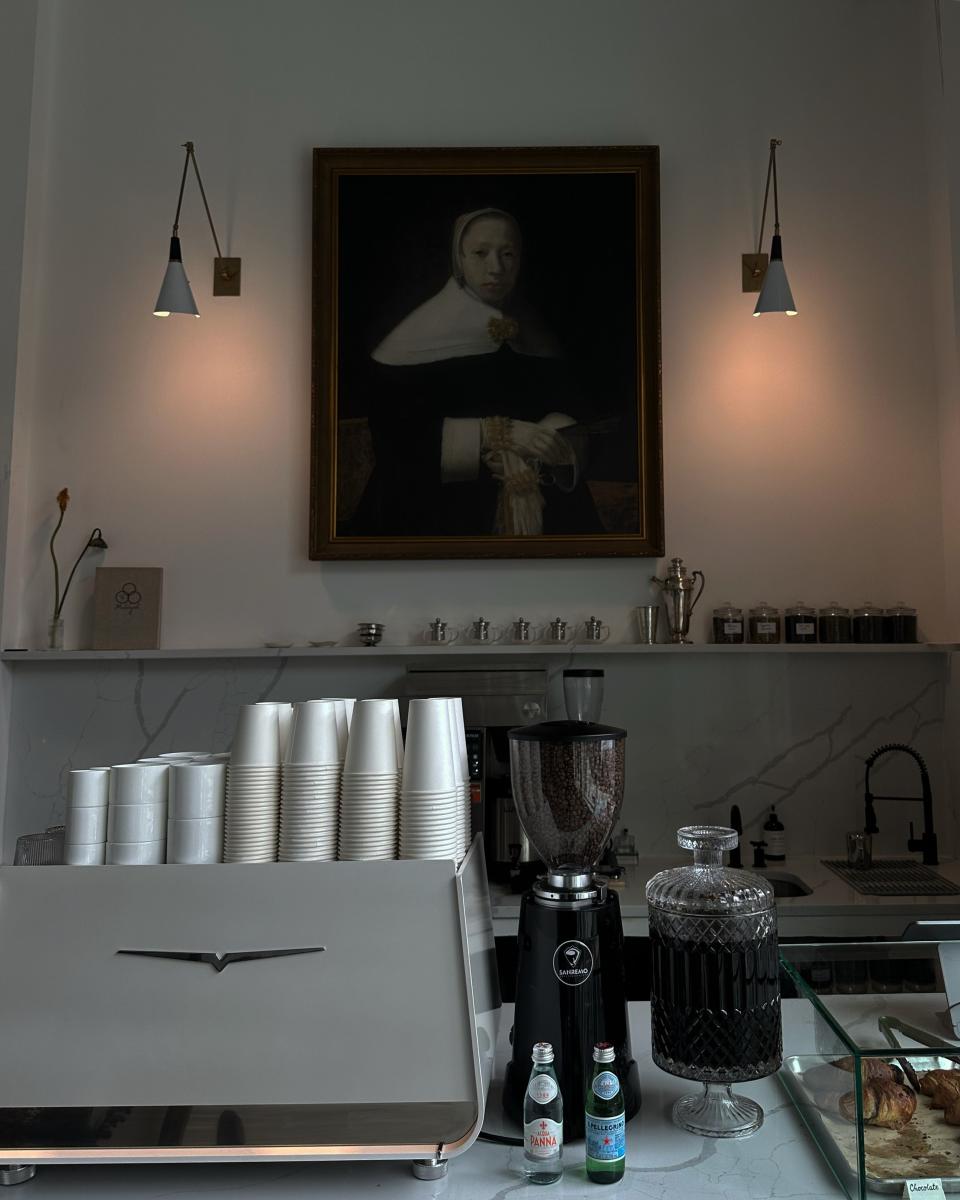
These portraits don’t share a style of provenance. Some look like they’re by a Dutch Old Master with dramatic lighting, elaborate costumes, and expressive brushstrokes; others are restrained folk art pieces with flat color. What they do have in common is that they speak the same language of portraiture’s overall rise in popularity, buoyed by contemporary figurative artists like Jordan Casteel, Oscar yi Hou, and Amy Sherald as well as museum curators looking to reframe the narratives surrounding the genre, ranging from The Metropolitan Museum of Art’s recent show on Juan de Pareja, a 17th-century Afro-Hispanic painter who appeared in a portrait by Velazquez, to an exhibition at the American Folk Art Museum on Black subjects in Early American paintings.
Collecting portraits of people you don’t know isn’t a new phenomenon. “Because I live in the past, I don’t really think it’s a trend,” says Aimee Ng, a curator at the Frick Collection, a museum of artwork once owned by the industrialist Henry Clay Frick. “For many centuries, if you wanted to show your affiliation or your admiration or your connection to somebody you didn’t know, but who you admired, it was totally acceptable—and a privilege—to have a portrait of them represented in your own home.” Frick, who died in 1919, acquired approximately 50 portraits during his lifetime, from a Velazquez painting of the King of Spain that hung in one of his receiving rooms to a Romney painting of Lady Hamilton, an English maid who became a mistress to many rich men, that he kept in his bedroom.
For Frick and many other American collectors of his time, buying old portraits was a way to associate themselves with powerful lineages, even if they weren’t their own. Going back even further, collecting “ideal heads,” or artistic representations of imaginary beautiful people, was very popular during the Renaissance.
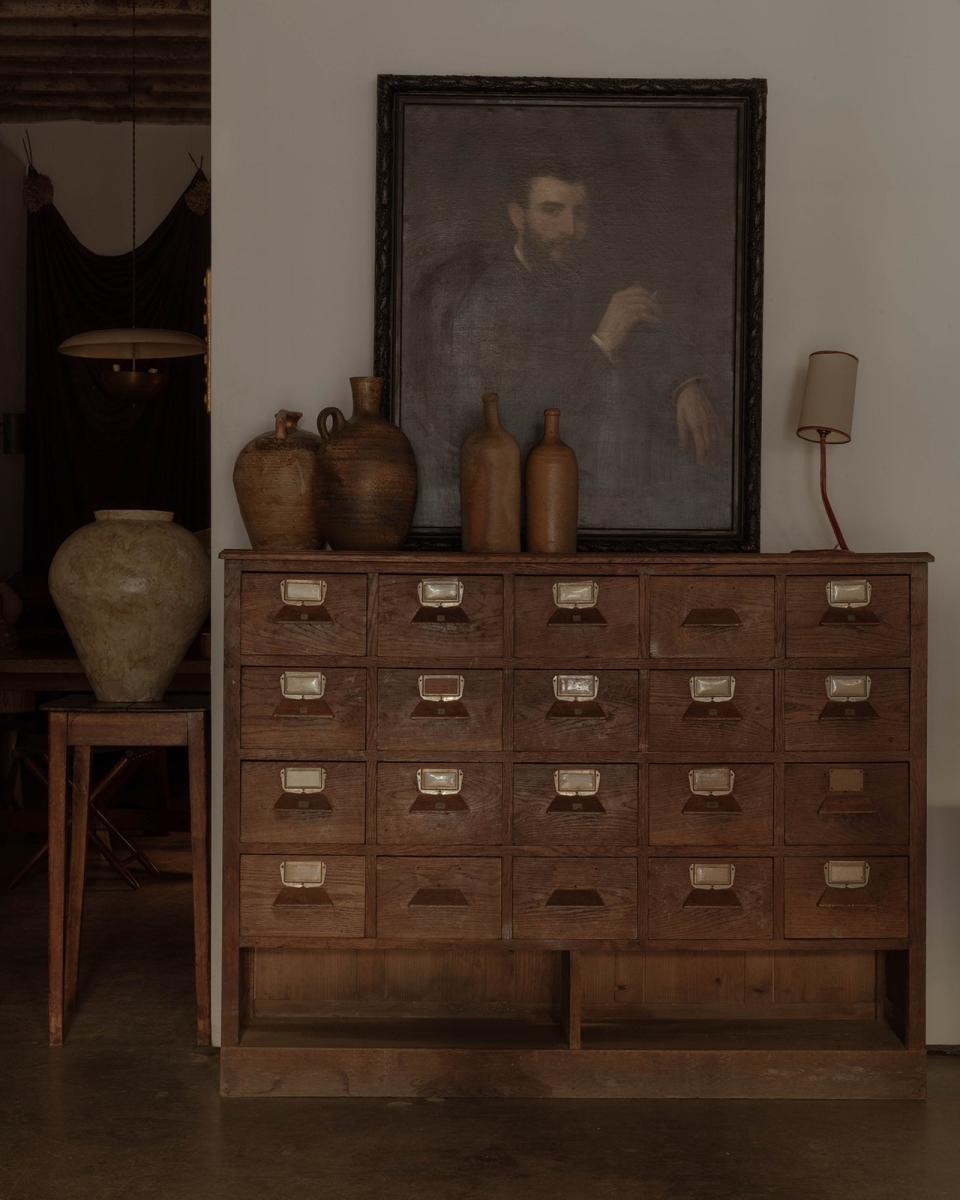
Galerie Was | Shipment 02
Today, the drive behind collecting old portraits feels more spiritually aligned to appreciating a beautiful object than honoring an ancestor or aligning with power. “We were strictly purchasing a vibe,” says Lauren Piscone, an interior designer and co-owner, with Allie Fitzpatrick, of the antiques gallery Galerie Was. The pair recently sourced two portraits, one of a young boy and another of a man with a pinky ring smoking a cigarette, from a dealer in France after discovering them in a storage container. “We were just like, Who is this guy?” Lauren recalls.
Humans are hardwired to respond to faces—it’s part of our biology—but there’s something particularly captivating about the people in these old portraits. Taína Caragol, curator of painting and sculpture and Latino art and history at the National Portrait Gallery, thinks this has to do with technology, of all things. “In this age of saturation of digital images and of constant selfies, antique portraits spark the imagination,” she explains. “These people posed and dressed differently. They attract our attention, because their presentation is so different from ours; they hold our interest and spark our curiosity in a way that ‘contemporary portraits’ we see on social media do not.”
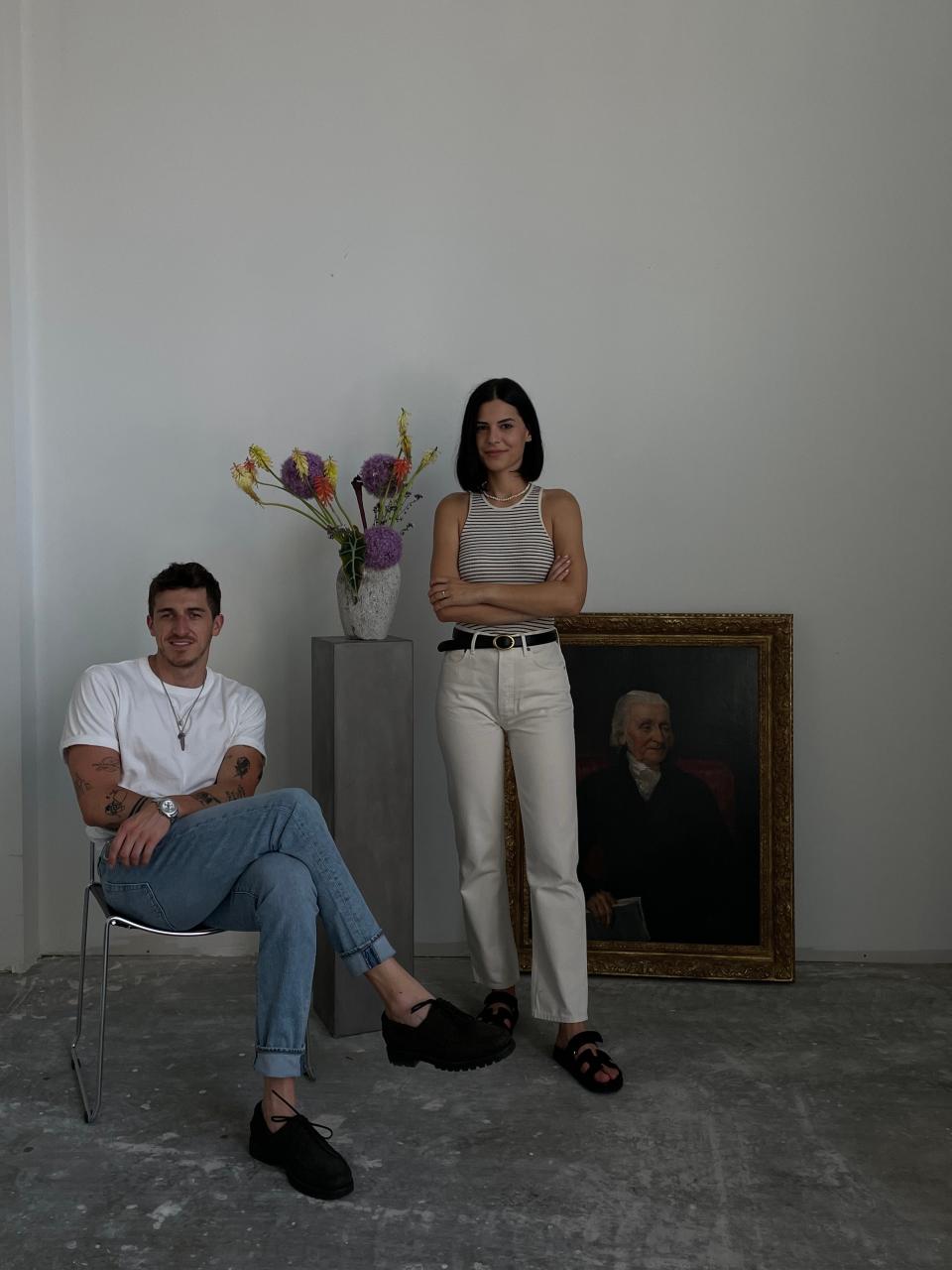
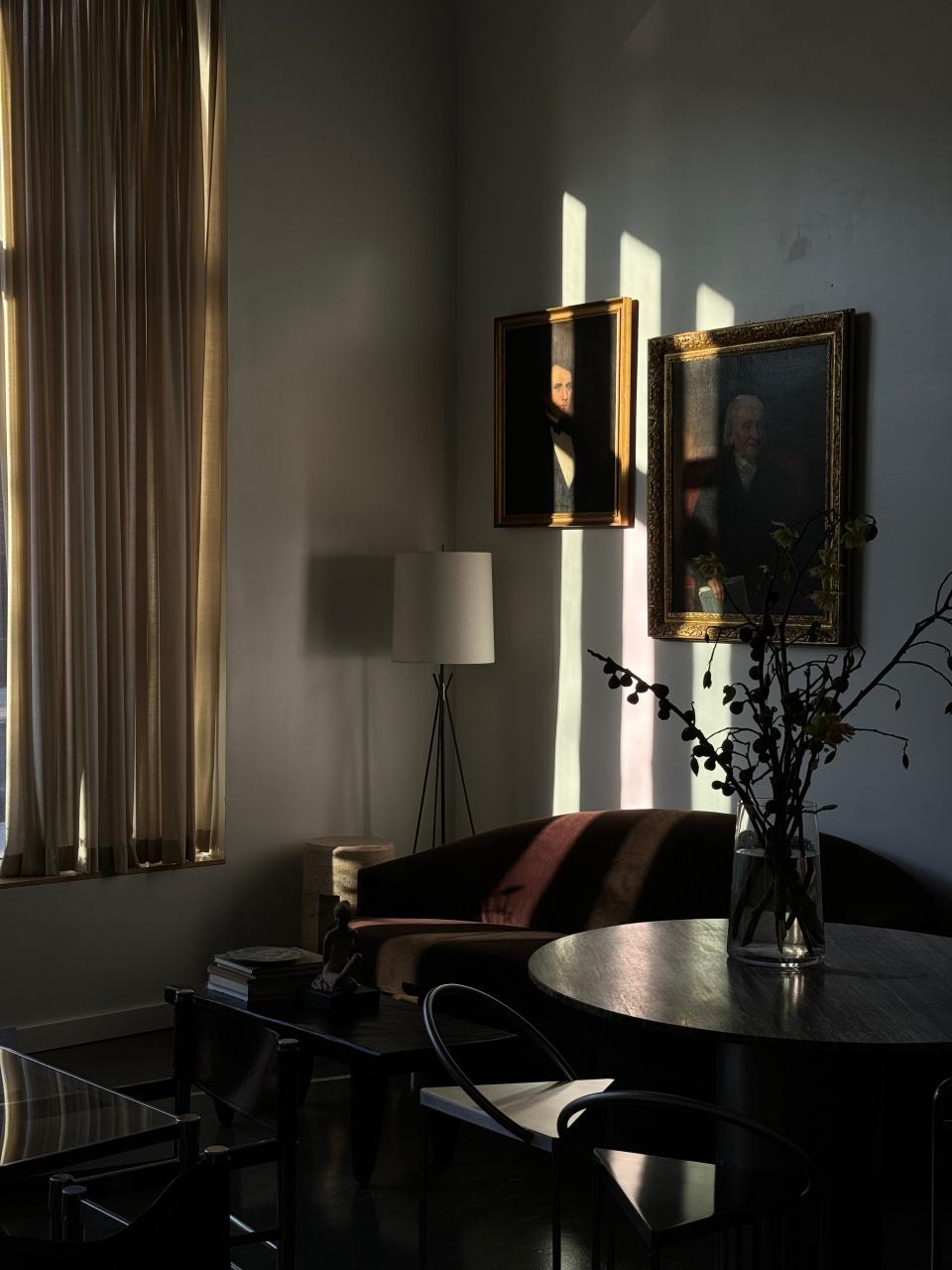
Portraits are often easier to grok than other forms of art, which makes having a conversation about them much more accessible. (They’re also one of the best deals in art collecting, according to a 2018 story published in the Wall Street Journal. 1stDibs has seen a 9% increase in portrait sales over the past year and a 34% increase in searches in March and April compared to the previous six-month average.) “An unknown portrait impels you to imagine the story behind the sitter’s life,” says Anthony Barzilay-Freund, editorial director and director of fine art at 1stDibs. “They also add a sense of history—even if the paintings don’t actually depict your ancestors.”
For Michael Diaz-Griffith, executive director of the Design Leadership Network and author of The New Antiquarians: At Home with Young Collectors, the distance between the people buying portraits and the people depicted in them is part of the draw. It’s easier to have a stranger on the wall than someone you know. “Portraits are an aspect of cultural patrimony and legacy that’s very personal and that view colors our appreciation and reception of them in both positive and negative ways,” he says. “I grew up with the negative perspective of, These people are dead now and they’re like ghosts living in my house with me, because my mother held it. She did not want dead people staring at her.” Now, Michael is an avid collector of American folk portraits and Chinese export reverse glass portraits.
There’s an aura around old portraits that draws people in. “I actually think that the portraits chose me,” says Ivana Somorai, owner of Rhythm Zero in Brooklyn. The millennial-coded coffee shop is modern, with concrete floors and white walls, but the artworks are all antique, including a handful of portraits. After finding one in a thrift store nearby with “1890 UK” written in small letters on the back, Ivana researched it and learned that the sitter was likely a professor. A couple days later, the shop got a shipment from an old house upstate, which also included portraits of a mother and son that now hang in her cafe. “I bought both because I didn’t want to separate them,” she adds.
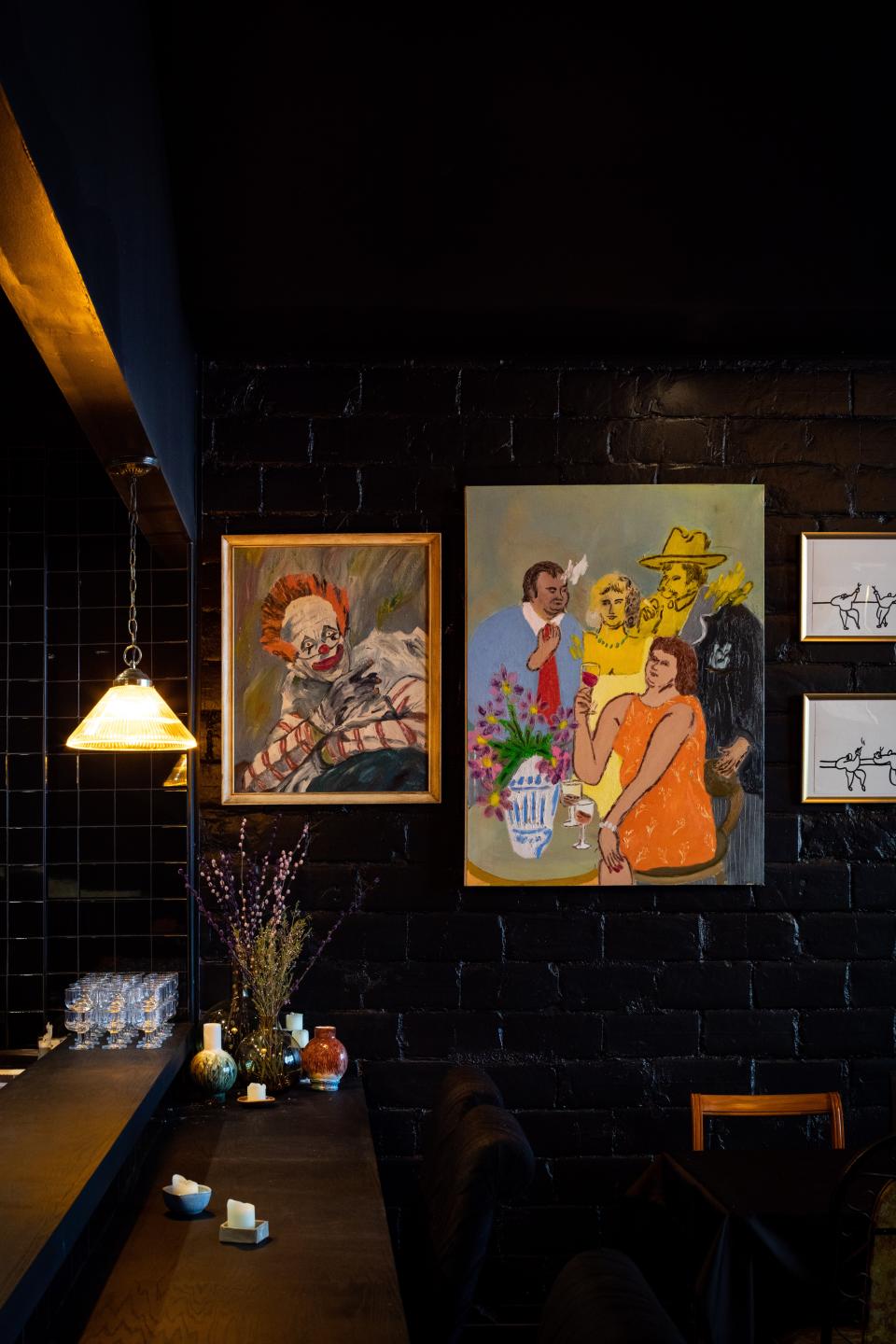
The allure of a mysterious stranger aside, old portraits are also remarkably good at making a space feel lived in. This is why Alfredo Paredes placed portraits of a fisherman and a mariner in his design for April Bloomfield and Gabriel Stulman’s new Brooklyn restaurant Sailor. “Incorporating antique portraiture is a playful way to bring in a sense of history and charm into any space,” he says.
Anand Sheth, an architect based in San Francisco, furnished a wine bar he recently designed with portraits layered over a simple black curtain “to add mystery” to the wall art. “People love the stories behind them, even if they’re not related to the folks in the pictures,” he says. “It’s like bringing a piece of history into the present without being overly nostalgic.”
So it’s not so strange, after all, to have a stranger hanging around. That’s part of the fun for most collectors. But Aimee points out one thing to be mindful of: Maybe steer clear of a portrait that gives off bad energy. “If you believe old objects are haunted by, or carry the ghost of, those that they depict, just hope for benevolent spirits,” she concludes.
Originally Appeared on Architectural Digest


